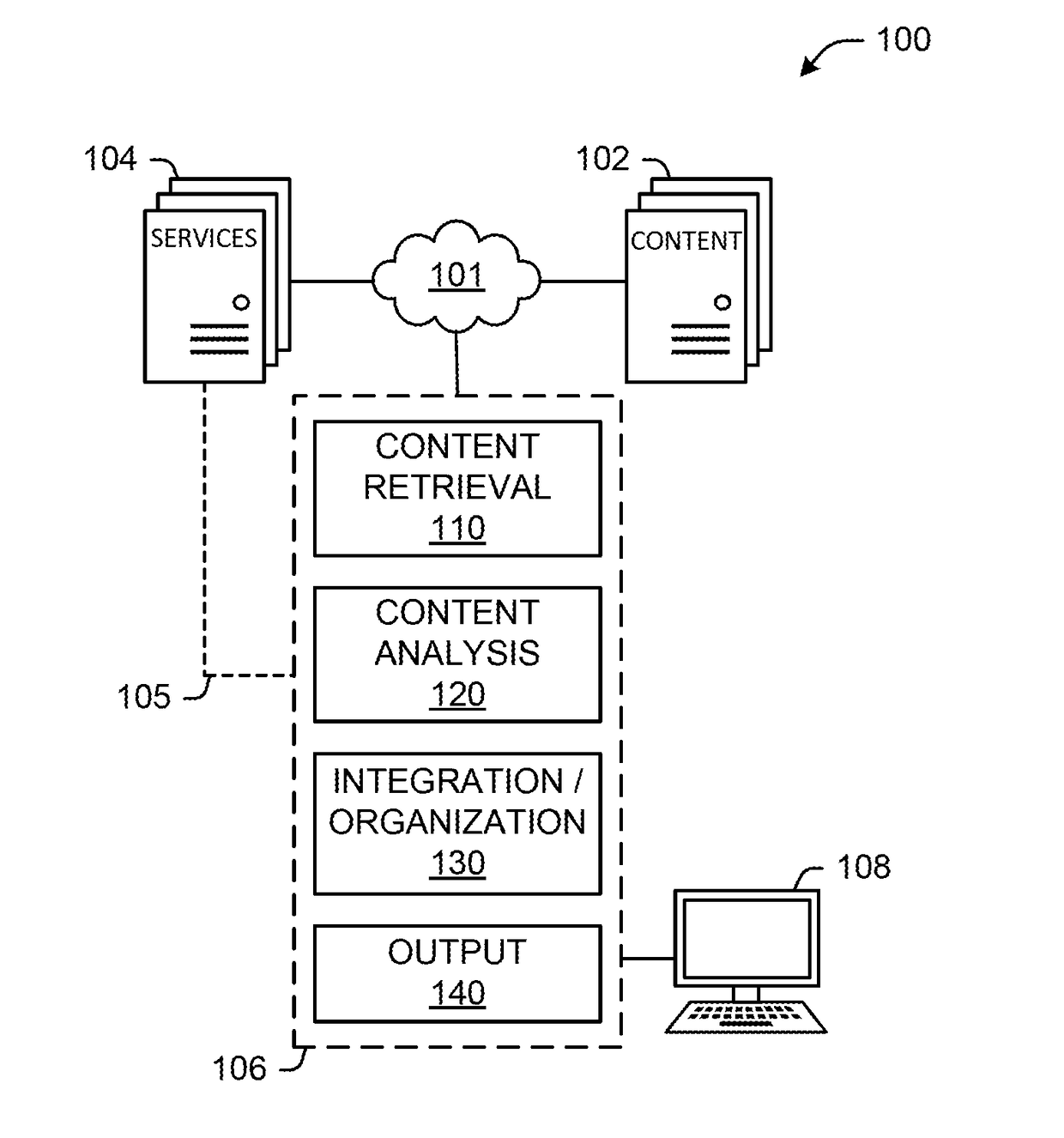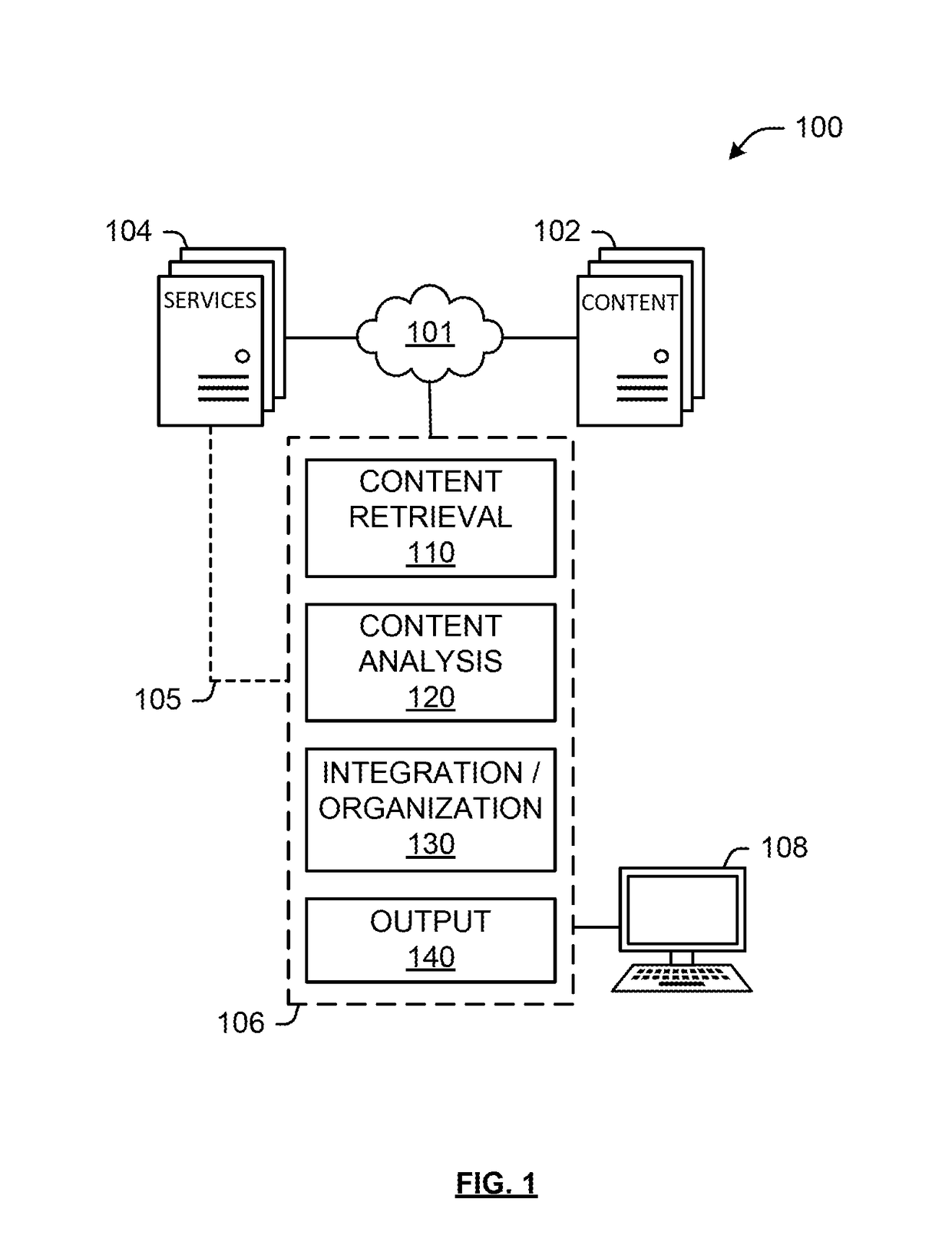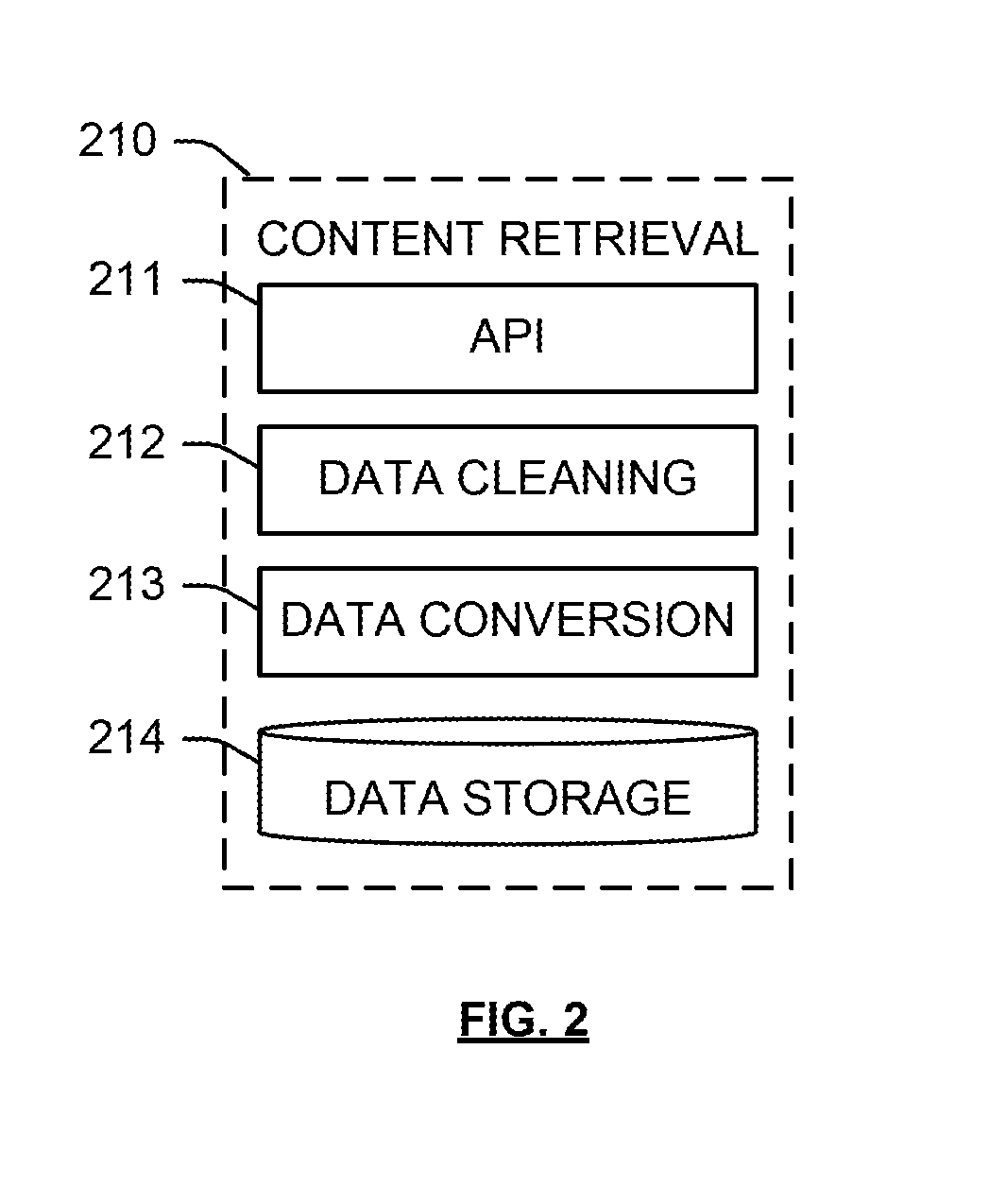Performing semantic analyses of user-generated textual and voice content
a semantic analysis and voice data technology, applied in the field of linguistics, can solve the problems of user-generated content, no method to ascertain or verify accuracy, and short time window for determination
- Summary
- Abstract
- Description
- Claims
- Application Information
AI Technical Summary
Benefits of technology
Problems solved by technology
Method used
Image
Examples
Embodiment Construction
[0021]Reference will now be made in detail to various embodiments, examples of which are illustrated in the accompanying drawings. The various exemplary embodiments are not intended to limit the disclosure. To the contrary, the disclosure is intended to cover alternatives, modifications, and equivalents.
[0022]References to “one embodiment,”“at least one embodiment,”“an embodiment,”“one example,”“an example,”“for example,” and so forth are used to indicate that embodiment(s) or example(s) may include a particular feature, structure, characteristic, property, element, and / or limitation. But, not every embodiment or example necessarily includes that particular feature, structure, characteristic, property, element, and / or limitation. Furthermore, repeated use of the phrase “in an embodiment” does not necessarily refer to the same embodiment.
[0023]FIG. 1 shows an exemplary system 100 for performing semantic analysis of user-generated content. System 100 comprises a network 101, one or mo...
PUM
 Login to View More
Login to View More Abstract
Description
Claims
Application Information
 Login to View More
Login to View More - R&D
- Intellectual Property
- Life Sciences
- Materials
- Tech Scout
- Unparalleled Data Quality
- Higher Quality Content
- 60% Fewer Hallucinations
Browse by: Latest US Patents, China's latest patents, Technical Efficacy Thesaurus, Application Domain, Technology Topic, Popular Technical Reports.
© 2025 PatSnap. All rights reserved.Legal|Privacy policy|Modern Slavery Act Transparency Statement|Sitemap|About US| Contact US: help@patsnap.com



